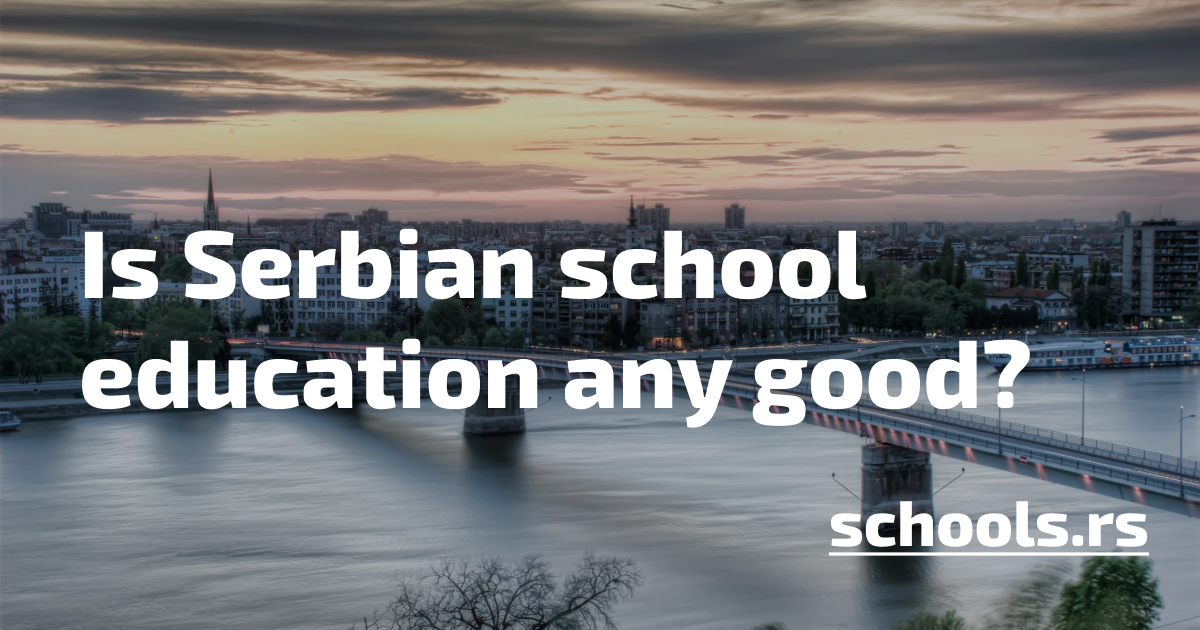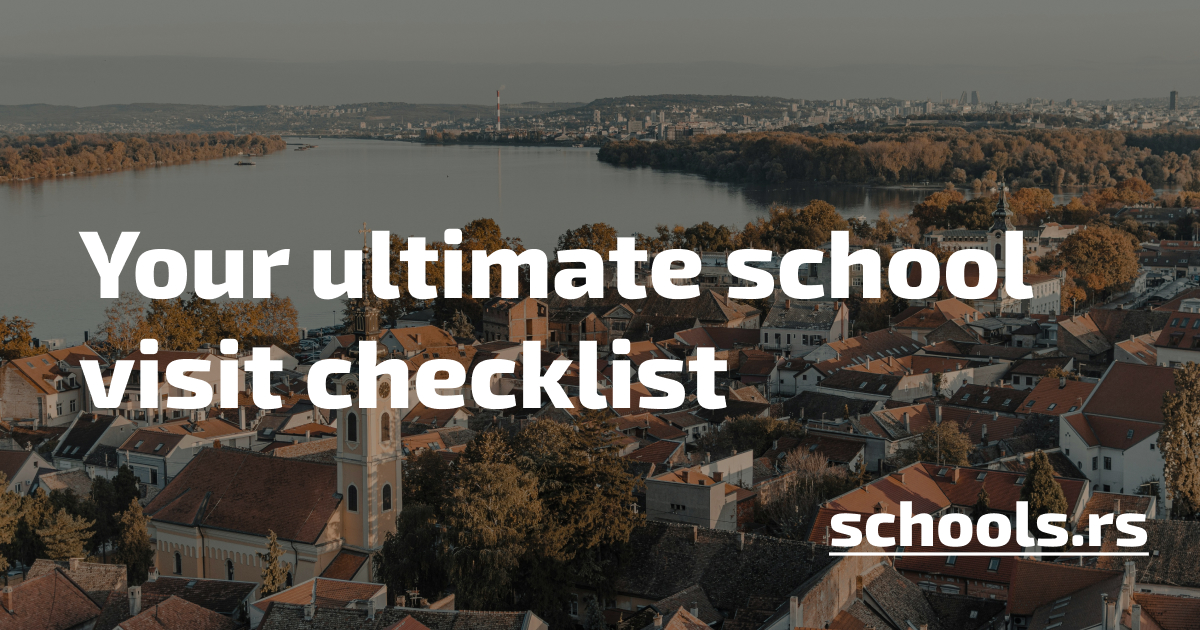International Schools in Serbia
By Konstantin Levushkin · 3 minute read · Updated on May 21, 2024
Serbia hosts 18 schools accredited by Cambridge International Education, and 4 IB accredited schools. There are also one German, one French and two Russian schools. All these schools can be found on our map.
Cambridge International and the International Baccalaureate are two of the largest international school networks (with approximately 10,000 and 5,000 schools respectively). The popularity of these systems stems from their relative flexibility combined with high prestige. Both the Cambridge AICE (Advanced International Certificate of Education) and the IB Diploma allow students to apply to the most prestigious universities worldwide.
Tuition Fees in International Schools in Serbia
The table lists only tuition fees. Typically, this covers the main school activities, textbooks, exam materials, and at least part of extracurricular education (clubs, excursions). Meals, transportation, and other services may not be included in this cost—please check directly with the school.
| School name | Stage | Tuition Fee / year |
|---|---|---|
| International School of Belgrade | Kindergarten and Primary | $23,165 |
| Lower Secondary | $24,955 | |
| Upper Secondary | $27,680 | |
| British International School | Reception | $7,200 |
| Primary | €9,900-10,500 | |
| Lower Secondary | €13,100 | |
| Upper Secondary | €13,750 | |
| Savremena International School | Lower Secondary | €9,900-€10,900 |
| Upper Secondary | €11,900-€12,900 | |
| Prima International School | Primary | €9,900 |
| Lower Secondary | €14,900 | |
| Upper Secondary | €14,900 | |
| Brook Hill International School | Reception | €7,450 |
| Primary | €9,450–9,850 | |
| Lower Secondary | €11,950 | |
| Upper Secondary | €12,450 | |
| Chartwell International School | Primary | €10,200-11,500 |
| Lower Secondary | €11,500-14,500 | |
| Upper Secondary | €14,500 | |
| Rudjer Boskovic School | Primary | €8,200-9,600 |
| Lower Secondary | €10,000-14,500 | |
| Upper Secondary | €16,000-16,500 | |
| International Primary School | Primary | €7,699-8,299 |
| Lower Secondary | €8,799 | |
| École Française de Belgrade | Primary | €5,893 |
| Lower Secondary | €6,847-7,362 | |
| Upper Secondary | €7,182 | |
| Deutsche Schule Belgrad | All stages | €4,700-6,800 |
How do IB and Cambridge International differ?
Parents often choose between specific schools rather than between educational systems, yet certain features of the systems can influence their choice. It is important to note that the diversity of schools within a single system can be greater than the differences between schools from different systems.
Generally, IB and Cambridge share similar educational approaches: they focus on the individuality of the child, build education around skills demanded in the modern world, such as critical thinking, and utilize modern teaching methods. However, there are several key differences:
-
Adaptability. In Serbia, international schools can implement their own programs without a national component. However, many Cambridge schools in Serbia offer a combined program. For instance, in some schools, all “Cambridge” subjects are taught in the afternoon. IB schools are less adaptable — integrating them with national programs is significantly more challenging.
-
Program Variability. Cambridge schools offer more variability, making them more popular. For example, to become a Cambridge primary school, it is enough to choose just one out of 11 subjects, although schools typically choose three: mathematics, English, and science. In high school (Advanced Level), students study five subjects, three of which they choose themselves. Variability in IB programs arises only closer to high school, but there are also many compulsory subjects.
-
Workload. IB programs are considered more challenging than Cambridge, especially at the high school level (Diploma Programme). IB students study 9 subjects and take exams at the end of the second year, while Cambridge A Level involves studying only five disciplines, with exams spread throughout the year. On the other hand, students who complete the IB are better prepared for university due to more rigorous academic preparation.
-
External Validation. To become a Cambridge International or IB school, candidate schools undergo an accreditation process and must subsequently confirm their status. Cambridge International assesses candidate schools against 27 criteria, while IB evaluates schools against more than 100 (IB criteria are more detailed). Becoming an IB school is significantly more difficult: the process is more expensive, longer, and more complex. For example, all management and teachers at an IB school must undergo mandatory training (Cambridge International does not have such requirements). Additionally, IB involves many more mandatory procedures and policies that must be implemented at the school.
-
Prospects. In terms of admission to international universities, IB and Cambridge International are similar. Cambridge AICE is more widespread among those aiming for European higher education, while the IB Diploma is typically pursued for education in the USA. This is partly because admission to British universities often only requires three A-Level exams, whereas this is insufficient for admission to the USA.


